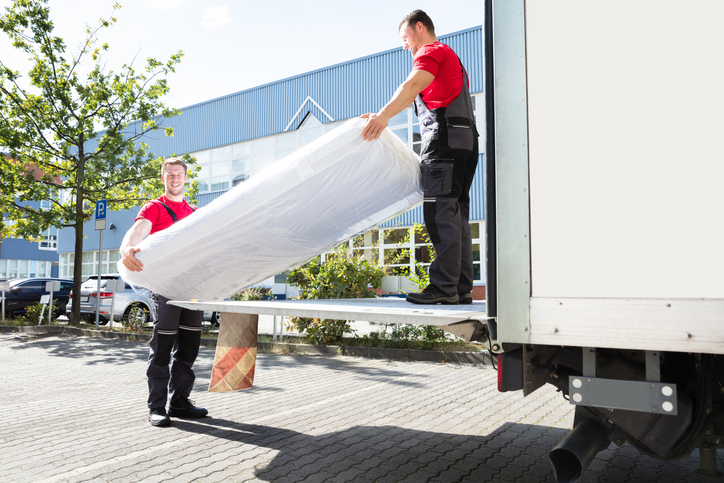Whether you are remodeling your living space, moving to a new house, or your kids are headed off for college, you may need to store your mattress in a self-storage unit. Proper mattress storage keeps it free from dust, bacteria, and mites, which can lead to health hazards.
Here’s our helpful guide on storing a mattress in a storage unit.
The pros of proper mattress storage
Here are some of the benefits of proper mattress storage:
- The mattress retains its shape
- Proper mattress storage decreases the chance of funky smells
- Proper mattress storage prevents the growth of mold or mildew
Storage unit size guide
Not all storage units are large enough for storing mattresses. We’ve broken down which storage unit sizes to look for based on the mattress size you need to store.
- 5×5 storage unit: the size of an average closet and can fit a twin mattress
- 5×10 storage unit: approximately the size of a small walk-in closet and can hold a queen-size mattress
- 10×10 storage unit: about the size of a standard bedroom and can fit a king-sized mattress
Storing a mattress in five easy steps
1. Clean the mattress
The mattress needs a thorough cleaning before being put into a storage space.
- Remove all beddings and mattress protectors, remove box springs from the bed frame, and then vacuum both sides to eliminate dust mites.
- If the mattress has stains, treat them. Sprinkle baking soda on the mattress and let it sit. Remove the baking soda using a vacuum cleaner and let the mattress dry.
- Disinfect the mattress with Lysol spray and allow it to dry out.
2. Wrap the mattress
Before moving the mattress to a storage unit, wrap it tightly in plastic and ensure you create a tight seal. Breathable plastic is better since thick plastic traps moisture, which can lead to mildew growth.
You can also purchase a mattress storage bag since it can create a tight seal and protect your mattress from accidents.
3. Placing the mattress in a moving truck
Do not tie the mattress to the top of your car, as this can lead to damage. Better to use a covered moving truck. If you’re moving other items in the moving truck along with the mattress, don’t place them on top of the mattress. It’s okay not to keep the mattress flat and instead place it on its side to make space for other belongings you may be transporting.
4. Orienting the mattress in a storage unit
Once you reach the storage unit, place the mattress flat to imitate its natural position. Do not place anything on top of the mattress. Instead, place the mattress on top of other objects if there is not enough space, ensuring it is level.
5. Retrieving the mattress from storage
Once you are ready to retrieve the mattress from your storage facility, follow the guidelines above to clean, wrap and transport your mattress. All these tips also apply to storing box springs.
If you want to store the mattress in your home, don’t store it in the garage. The garage has high humidity, which may end up causing the growth of mold or mildew.
How to store different types of mattresses
Storing a spring mattress
Spring mattresses can easily get damaged, so it is crucial not to put any items on top of them while in storage. This mattress can be stored on its side briefly due to its reinforced nature.
Storing a memory foam mattress
These mattresses are very flexible and should never be stored on their side. Make sure to avoid using upholstery cleaner with a memory foam mattress since it may not come out easily from the foam compared to standard fabric.
Storing a mattress topper
It is best to store a mattress topper in a vacuum-sealed bag to protect it from damage.
Protecting the mattress from bedbugs
The best way to protect a mattress from bedbugs is to find a reputable storage facility. Make sure you inspect the storage unit before moving the mattress and other belongings into it. Also, examine the mattress and other belongings before moving them into the storage unit. Finally, ensure you don’t store any food in the unit and check in on your storage space from time to time.





